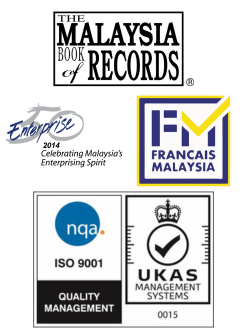Author: Simon LOW | 21 November, 2018
In recent decades, Go-Green has become a hot topic for everyone and many are more aware about it. World population is increasing which increases the demand of freshwater indirectly too. It becomes a real threat when some areas cannot access to fresh water for daily living activities. Despite of that, many are still wasting water due to their wasteful water usage habit and selfish attitude. Thus nowadays, Rainwater Harvesting System (RWHS) is playing a vital role in Go-Green as to save water while mitigating flood risk in certain area. Through RWHS, it’s a very good start for everyone to restore our nature back to its prime even in urban context filled with development at Malaysia.
In Malaysia, rainwater harvesting system exists for many years but it is still not commonly applied in projects. This is due to the different projects compliance in every states for there are different jurisdiction for every state governments and local councils. Thus we can see that some projects in certain areas have RWHS while some projects do not. In fact, Malaysia as a tropical country which relatively rich in water resources with an average annual rainfall of 2400mm [1] should be more focused in RWHS as a flood control and alternative water resources.
According to the statistic, Malaysia is categorised as one of the countries that has high domestic water consumption range from 209 to 228 liters per capita per day (lcd). This water consumption level has exceeded the recommended measure, which is 165 lcd by World Health Organisation (WHO) [2] which is relatively higher than Singaporeans with 142 lcd in 2017 [3]. Thus, it is important for Malaysian to aware about water saving and Go-Green.
Indeed, rainwater is very useful whereby it can be used to water garden, wash cars, top up swimming pool, flush toilets, wash clothes, and etc [4]. Thus by RWHS, it can reduce the domestic water consumption and save the fresh water supply while reducing the water bills. Some rural areas with the threat of poor water supplies can be resolved or minimized with RWHS, same goes to helping farmers on agriculture. In addition, RWHS helps to mitigate flood which is one of the main issue faced by Malaysian during year end monsoon season and this also reduce nutrient loss to rivers [4]. Besides, compared to other fresh water source, it has the advantages in terms of lower carbon footprint and higher efficiency due to less pumping system is required from one point to another point [4].
There are a number of countries started different approaches as initiative to encourage the installation of RWHS in the new development area. The governments are offering various benefits to properties with RWHS instalment with low interest loan, tax exemptions, rebates or allowances. Example: Japan provides subsidy and low interest loan [5]; Brazil promotes programme that targets to install one million cisterns in semi-arid areas [6]; and USA provides tax exemptions and rebate [6]. However, Malaysia is still lacking of RWHS application even though government has implemented it especially in public and government buildings. These are due to various factors e.g. comparatively high upfront cost, low water charges, poor awareness, weak authority’s compliance and execution.
Nevertheless, RWHS is still very important in every development as part of contribution for Go-Green to save more water and restore our mother earth. Education to raise the awareness either in school or family needs to be conducted consistently while government plays a vital role in reducing the domestic water usage by imposing necessary regulations and tariff. In conclusion, RWHS can provide various socio-economic and environment benefits by reducing the water bill and as an alternative water source to supply non-potable water and flood mitigation.
Simon LOW
General Manager
IPM Professional Services Sdn Bhd
References:
1) Che-Ani, A.; Shaari, N.; Sairi, A.; Zain, M.; Tahir, M. Rainwater harvesting as an alternative water supply in the future.
Eur. J. Sci. Res. 2009, 34, 132–140.
2) Water Efficiency. Available online: http://www.awer.org.my (accessed on 20 November 2017).
3) Singapore Water Story. Available online: https://www.pub.gov.sg (accessed on 23 March 2018).
4) Nor Hafizi Md Lani, Zulkifli Yusop, and Achmad Syafiuddin. A Review of Rainwater Harvesting in Malaysia: Prospects
and Challenges, 19 April 2018
5) Furumai, H.; Kim, J.; Imbe, M.; Okui, H. Recent application of rainwater storage and harvesting in Japan. In
Proceedings of the the 3rd RWHMWorkshop, Yosemite National Park, CA, USA, 10–13 March 2008.
6) Domènech, L.; Saurí, D. A comparative appraisal of the use of rainwater harvesting in single and multi-family
buildings of the Metropolitan Area of Barcelona (Spain): Social experience, drinking water savings and economic
costs. J. Clean. Prod. 2011, 19, 598–608.


